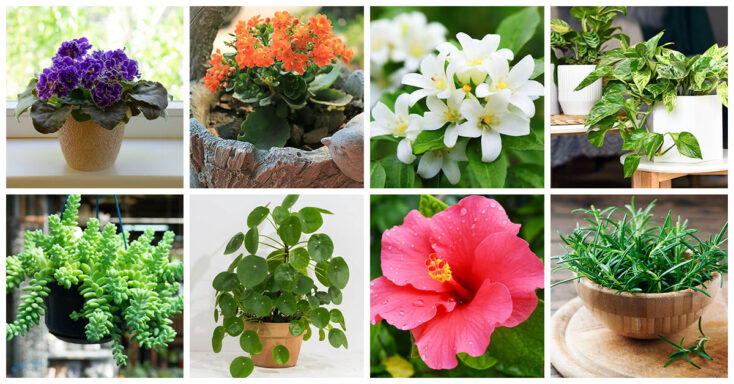When growing plants indoors, finding a space with enough sunlight is often a challenge. However, for those who have large, south-facing windows in their home, getting enough sunlight is not an issue. Instead, those indoor gardeners face the difficulty of finding plant species that can survive all day in direct sun exposure. Fortunately, we have created this list of the best types of houseplants for south-facing windows so that you can have a full understanding of the many beautiful plants that thrive in those settings. Read on to learn about the most valuable sun-loving plants that you can start growing in your home today.
Key Takeaways
As we present each of the plants for south-facing windows on the list to follow, we will provide a brief summary for each one, which will share the most interesting ornamental features and the most important care factors for the plant species in question. However, you may also notice that there are a few key takeaways that ring true for this list as a whole. The five most significant of those key takeaways are listed below.
- Plants for south-facing windows may survive in areas that receive less light as well.
- Plants for south-facing windows can have incredible flowers and foliage.
- Both ornamental and edible plants can grow in south-facing windows.
- Plants for south-facing windows come in many forms, including trees, herbs, and vines.
- It remains possible for plants to receive sun damage even if they are generally well-suited for south-facing windows.
29 Sun-Loving Types of Plants for South-Facing Windows that Look Amazing
1. African Violet (Saintpaulia ionantha)
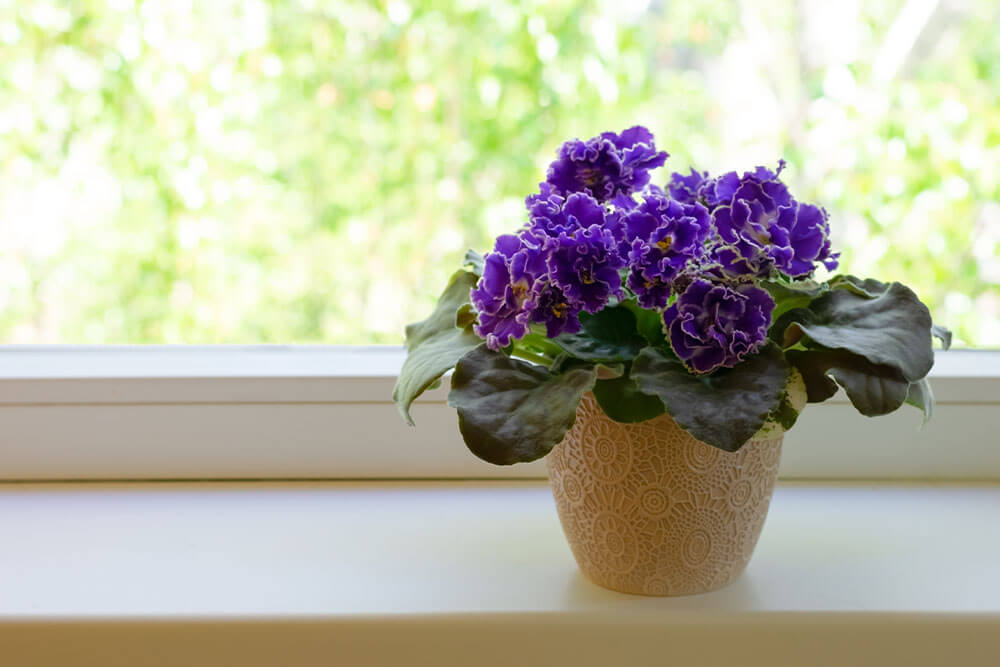
Although this plant is typically on the smaller side, it is sure to catch your eye every time you enter the room where it is growing during the bloom time. African violets have fantastic flowers that hold a deep purple hue. They bloom in clusters and have tiny yellow centers. Since African violets are so small, they fit well in containers that are also on the smaller side, and they are quite easy to maintain. African violets also come from hotter parts of the world, which means that they not only survive but thrive in high sun exposure areas, including south-facing windows.
2. Aloe Vera (Aloe vera)
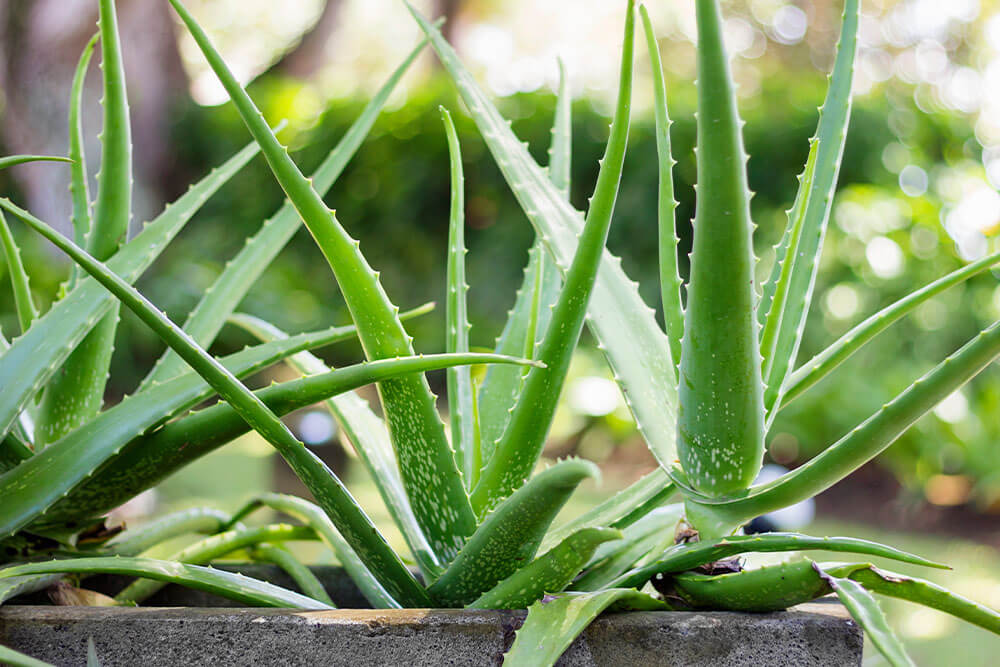
Aloe vera is a plant that is both beautiful and very easy to grow. Those two factors have caused aloe vera to become one of the most popular succulent plants on the market today. Aloe vera plants develop foliage that is long, pointed, and full of a healing gel that you can commonly find available for purchase in your local convenience store. However, aloe vera will not grow vigorously if it cannot access the sunlight that it needs. As such, placing an aloe vera plant in a south-facing window is one of the best ways to make sure that it performs at its best.
3. Amaryllis (Amaryllis)
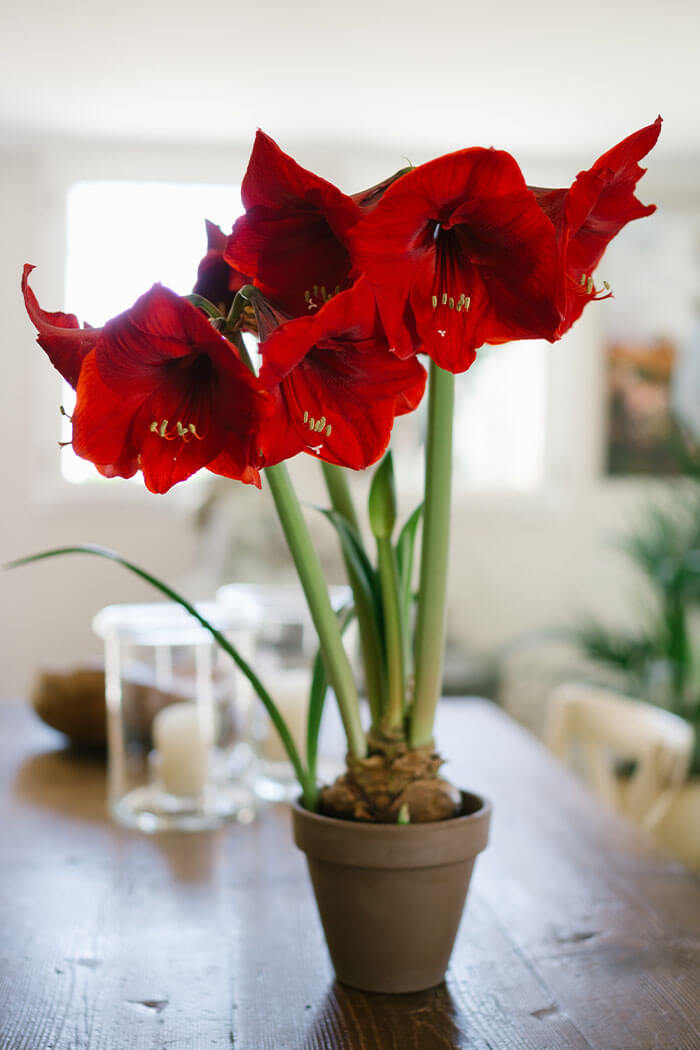
When it comes to striking indoor plants that offer astoundingly beautiful flowers, amaryllis is at the top of the list of options. This sun-loving plant has a thick main talk that is tall and perfectly vertical. At the top of the stalk, a set of flowers forms a crown of color at the plant’s apex. The flowers of the amaryllis plant are often solid red or pink. However, amaryllis flowers can also have a two-toned color pattern that may feature pink, white, or red.
4. Basil (Ocimum basilicum)
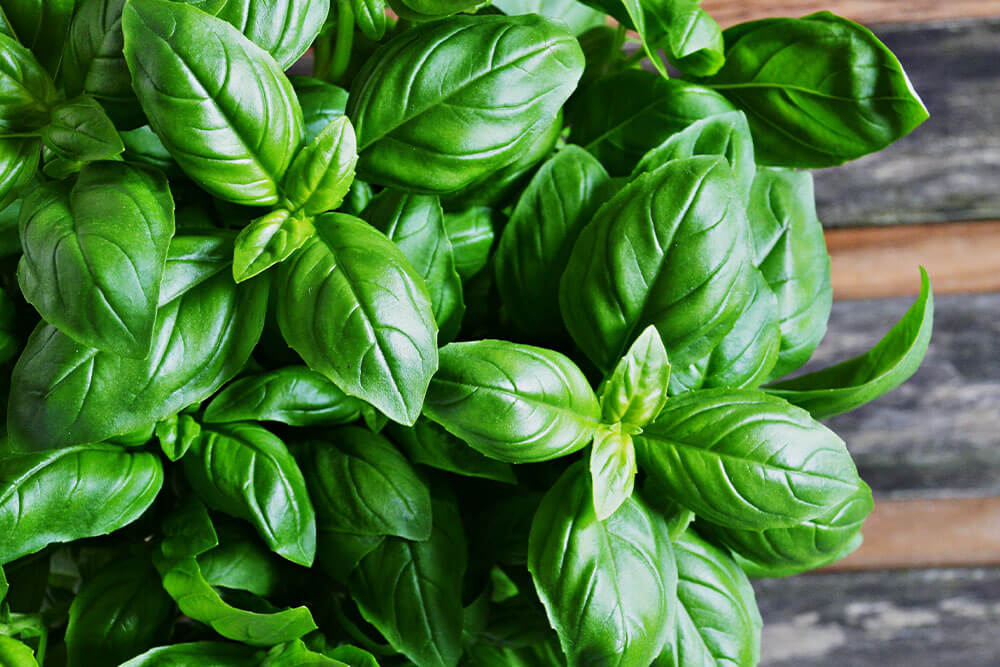
Have you ever dreamed of growing herbs that you can use in your kitchen but don’t have the outdoor space to create a full vegetable garden? If so, then you should know that you can grow plenty of herbs on the sill of a south-facing window. Basil is just one of a few herbs that are perfect for this setting. In no time at all, this plant will provide you with rounded green leaves that you can chop and include in pasta, sauces, and plenty of other culinary dishes. But even if you don’t intend to harvest your basil, you can rely on this sun-loving plant to provide a beautiful set of greenery for your eyes to feast on.
5. Bird of Paradise (Strelitzia reginae)
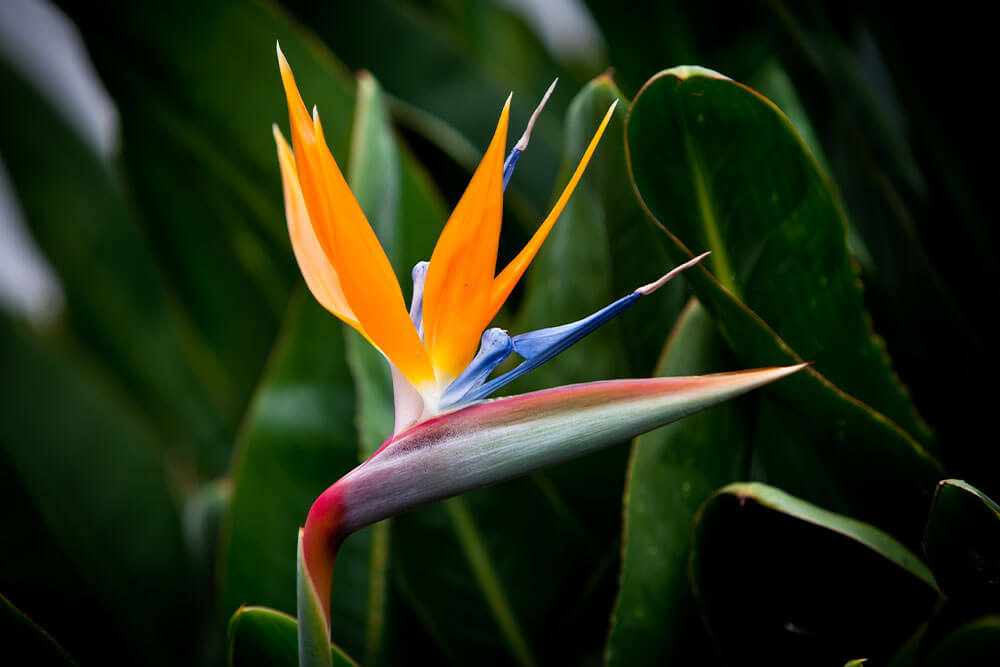
Here is another example of the fact that the group of plants for south-facing windows includes some of the most spectacular flowers you can imagine. In fact, whether growing indoors or out, the bird of paradise plant is one of the most famous and captivating flowering plants in existence. Bird of paradise plants are relatively tall compared to their spread, and they have a small set of large oval-shaped leaves. However, it is the blooms of this plant that give it its notoriety. Each flower has brightly colored petals that take a form that is remarkably similar to that of a bird’s head.
6. Chinese Fan Palm (Livistona chinensis)
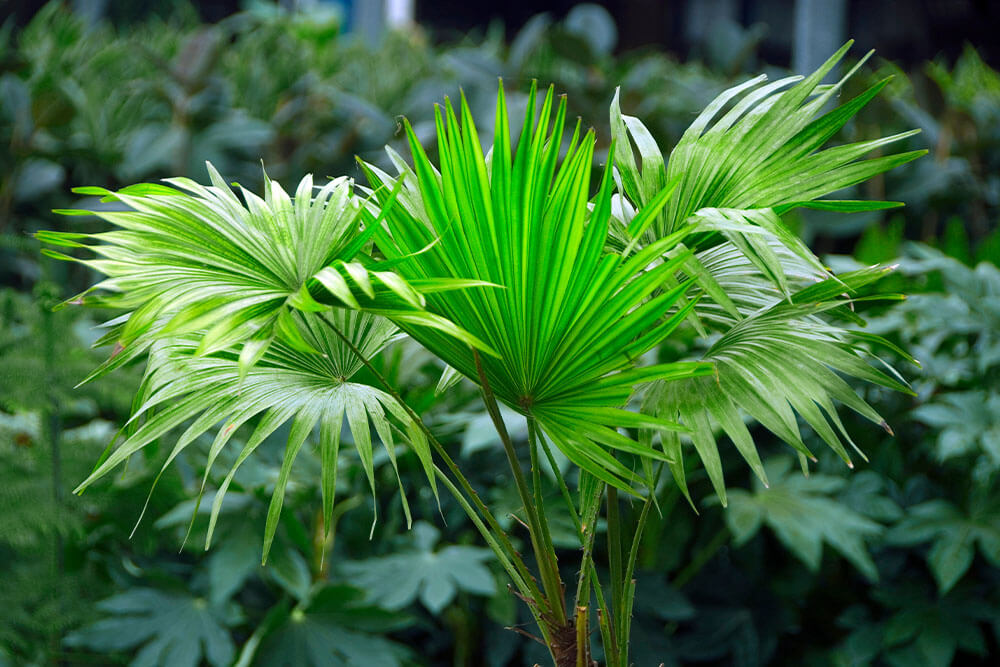
If you are familiar with palm trees, then you know that these plants tend to thrive in locations that are hot and sunny. As such, it is no surprise to learn that there are more than a few palm tree varieties that grow well in south-facing windows. Fortunately, many of the indoor palm tree options don’t grow as large as their outdoor counterparts. One such example is the Chinese fan palm tree, which remains small indoors, loves sunny windows and provides large, fan-shaped fronds that are great for adding greenery and texture to your indoor garden planting schemes.
7. Croton (Codiaeum variegatum)

Croton plants reveal the fact that a plant’s color does not need to come from flowers alone. Instead, the leaves of many indoor plants are great for providing colors, and we are not just talking about green. In the case of a typical croton plant, the leaves will be somewhat large and leathery and will likely hold multiple colors at once. Those colors include yellow, orange, and dark purple. Often, each leaf will have a primary color and an accent color that runs throughout the leaf’s veins.
8. Devil’s Ivy (Epipremnum aureum)
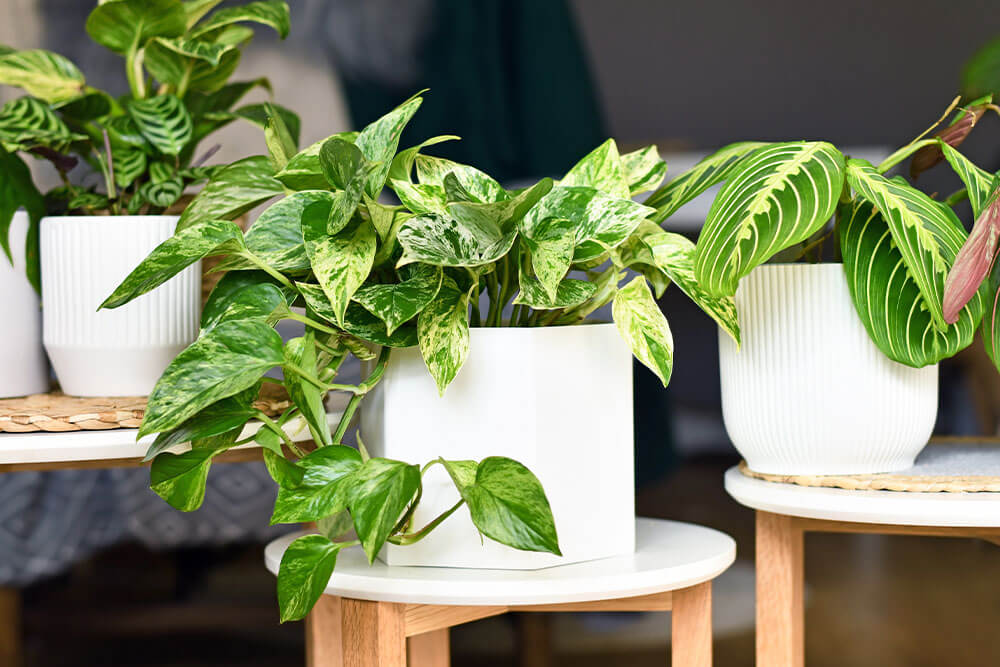
If you have ever searched for plants that grow well in low-light settings, then you may have come across the Devil’s ivy plant. Interestingly, while it’s true that this plant thrives in the shade, the most important factor to note about the Devil’s ivy plant is that it is highly adaptable. Amazingly, this species can survive in nearly any level of sun exposure, including the full sun that comes through a south-facing window. Along with being adaptable, Devil’s Ivy is also a fast-growing vine with lovely foliage. Each leaf has a loose heart shape and often has a variegated color pattern.
9. Donkey’s Tail Plant (Sedum morganianum)
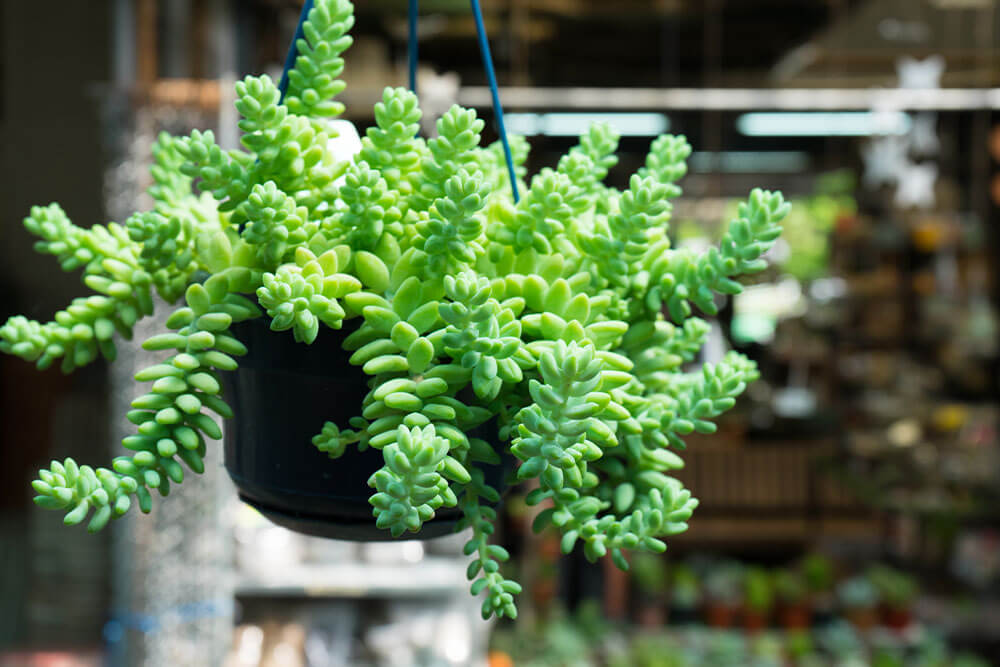
The donkey’s tail plant is another example of a succulent species that will thrive in a south-facing window. This plant will also wow you with its wild growth habit. When growing a donkey’s tail in a container, you’ll witness this plant spilling over the edge of the container as it sends out its dangling foliage. The foliage itself forms a dense, rope-like shape that is incredibly textural. Over time, these rope-like appendages will continue to develop and increase their length, which only enhances the overall visual effect.
10. Dwarf Palmetto (Sabal minor)
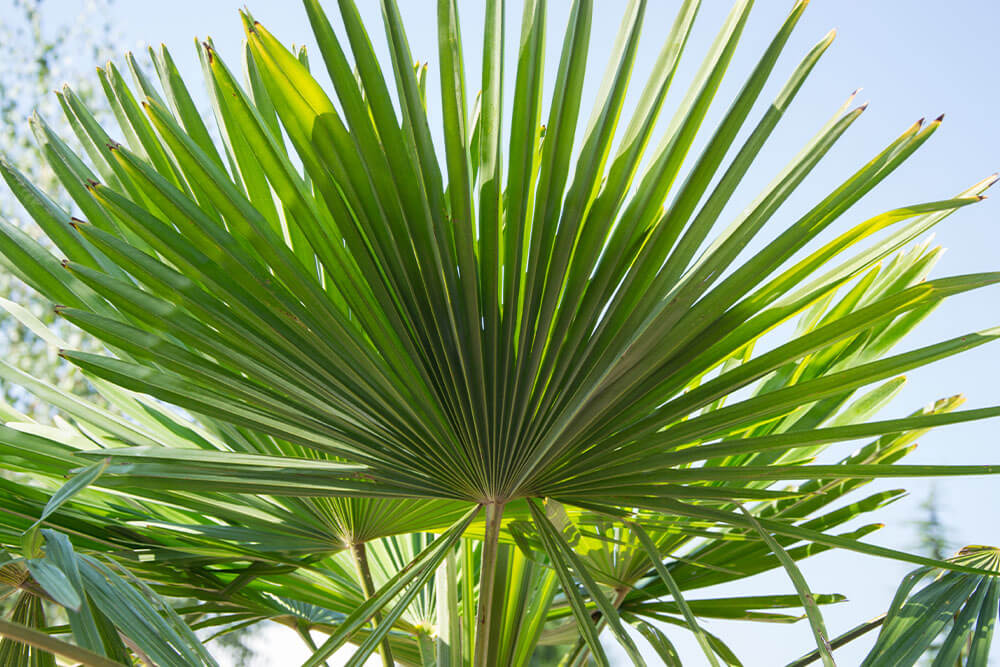
As we mentioned earlier, palm trees are a group of plants that provide many options for gardeners who need a species that can grow in a south-facing window. In this instance, the dwarf palmetto provides beautiful fan-shaped fronds that are both large and attractive. As this plant’s name implies, it is a dwarf species, meaning that it can grow well in containers and is unlikely to grow too large for your indoor growing location. In many cases, this plant will reach only a few feet tall at maturity. Interestingly, the dwarf palmetto is also a plant that can grow well in full sun or partial shade.
11. Echeveria (Echeveria)
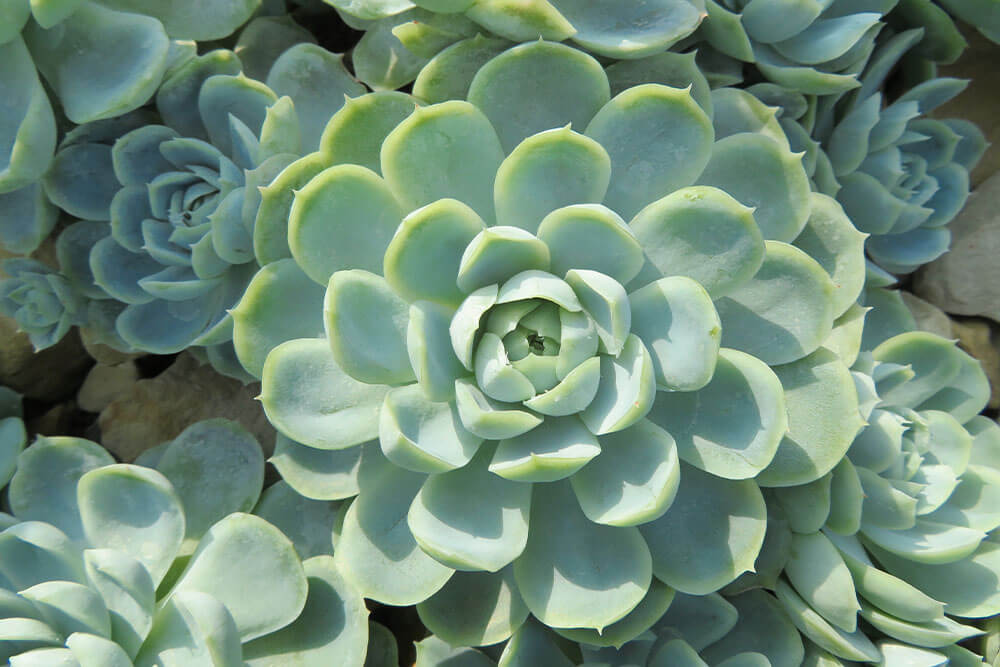
Although there are many succulents to choose from, this one may be the most popular of all. In fact, if you imagine a quintessential succulent plant, then echeveria is likely the plant that comes to mind first. Echeveria succulent plants have foliage that forms a rosette pattern, and it is usually a light bluish-green color. Since, like many succulents, the echeveria plant lives naturally in hot and sunny climates, it is the perfect option for the window sill of your south-facing window.
12. Flaming Katy (Kalanchoe blossfeldiana)
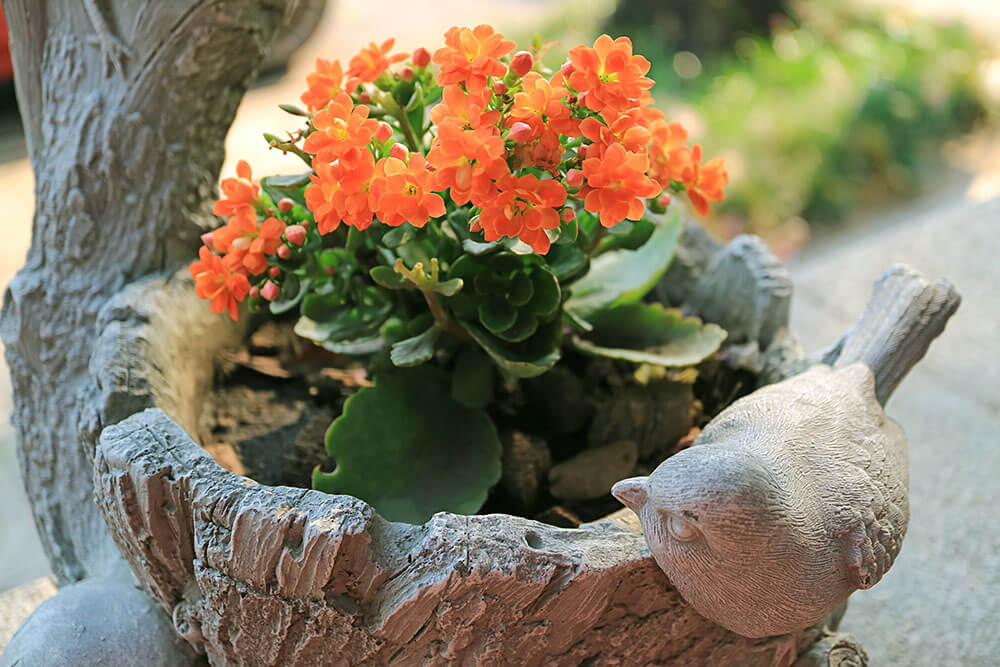
The flaming Katy plant is one of the best plants to grow if you want to add color to your indoor garden. These plants have fantastic flowers that, while small, appear in large numbers and hold amazing fiery hues such as red, orange, and yellow. However, the most valuable aspect of this plant may not be the appearance of the flowers but the timing of when they choose to open. The typical bloom time for a flaming Katy plant spans nearly half the year and begins during the winter months, while few other plants are able to provide color.
13. Flamingo Lily (Anthurium)

After first encountering a flamingo lily plant, you’ll quickly learn that this plant has flowers that you won’t soon forget. Each of these blooms includes a singular large petal that has a heart shape. That heart shape wraps itself around a vertical center structure. The flowers of the flamingo lily are incredibly vibrant in their color, which is usually red or pink, but that is not the only floral feature that makes this plant stand out. The flowers of a flamingo lily also have a very glossy texture that allows them to shine whenever the light touches them.
14. Hibiscus (Hibiscus rosa-sinensis)

There is a version of the hibiscus plant that grows as a medium to large shrub that, while beautiful, is not suitable for indoor growth. However, what many gardeners are unaware of is that there is another related species within the Hibiscus genus that is the perfect indoor plant for a south-facing window. The species that goes by the botanical name Hibiscus rosa-sinensis has all of the beautiful floral characteristics of the shrub version, but it maintains a small size that allows it to fit easily in containers and add color to your indoor planting plan.
15. Jade Plant (Crassula ovata)
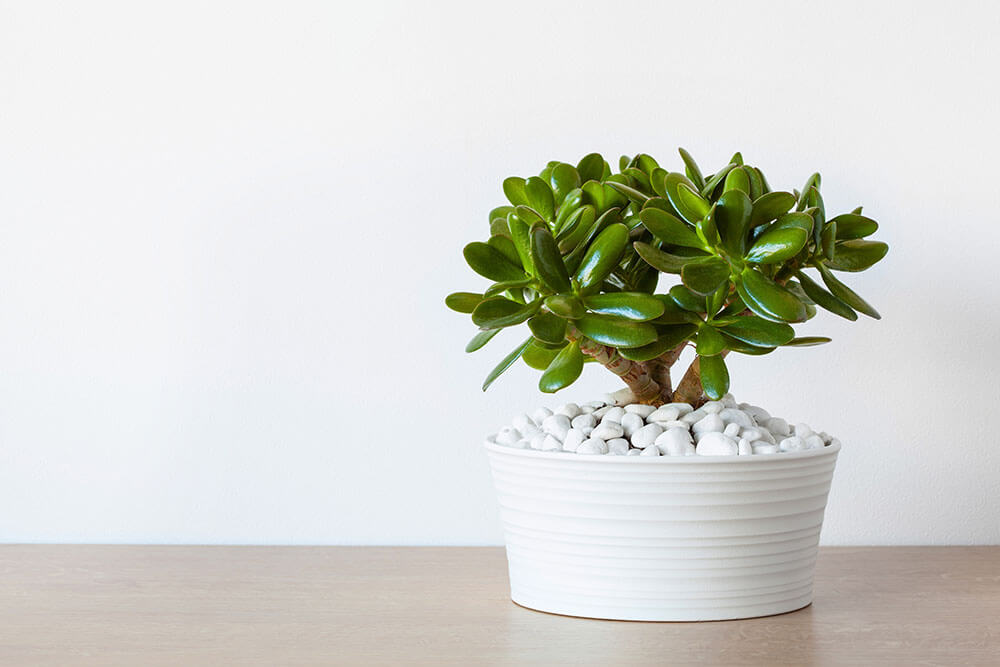
The jade plant is another succulent variety that will thrive in a south-facing window for most of its life. This plant looks like a miniature tree or shrub that has woody stems and foliage that is round, thick, and quite fleshy. However, before placing this plant in a south-facing window, you should know that this setting is not ideal during all phases of a jade plant’s life. Instead, this plant will be somewhat vulnerable to strong sunlight when it is young. However, once mature, a jade plant will grow well in a location that receives direct sunlight from a south-facing window.
16. Jasmine (Jasminum officinale)
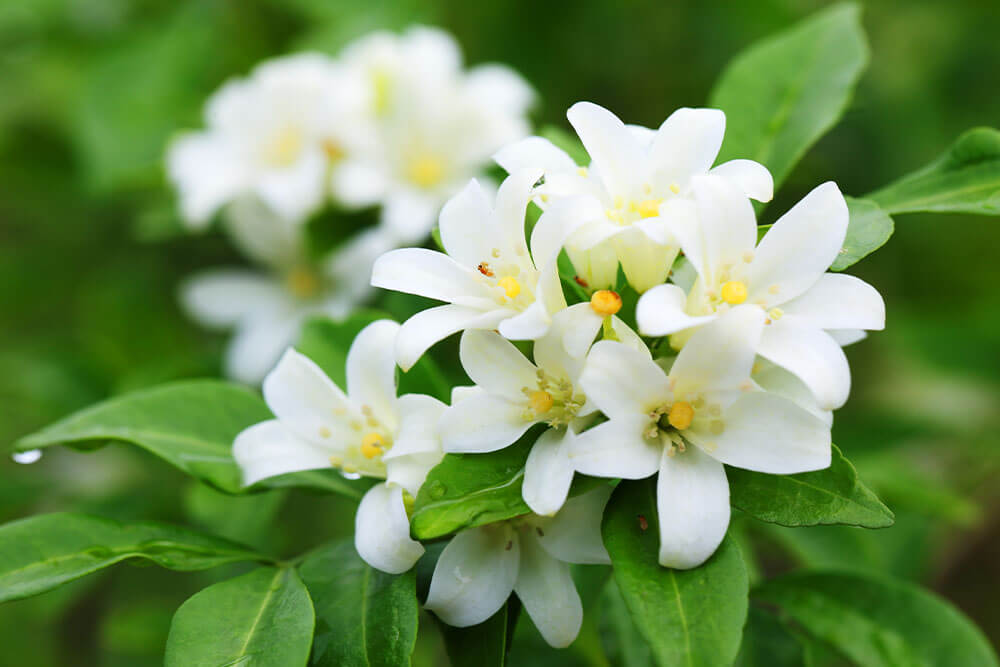
Jasmine plants come with vibrant green leaves that are the perfect contrast to a set of stark white flowers. Along with being perfectly white, the flowers of a jasmine plant also have an interesting shape. While some varieties have flowers that are similar in form to a rose, most versions of the jasmine plant have pinwheel-shaped flowers that are slightly twisted. While this plant starts small, it can expand to large sizes, and it can grow as a climbing plant, which means that you may need to control its spread as it develops.
17. Madagascar Dragon Tree (Dracaena marginata)
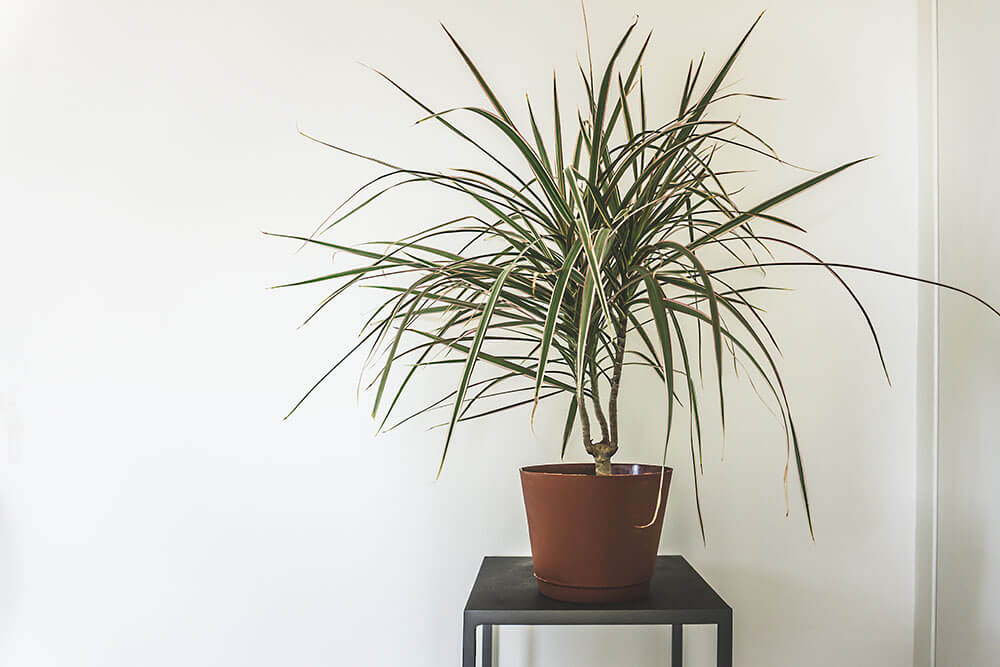
Earlier, we mentioned a plant that can grow in either full sunlight or in lower light conditions. That same adaptability to varying degrees of sun exposure is also true for the Madagascar dragon tree, which is why you can find this plant on lists of low-light plants while it also appears here. Regardless of where you grow this plant, the Madagascar dragon tree will develop with a set of straight vertical stems that hold a cluster of foliage that creates a spiky ball-shaped canopy. As such, the Madagascar dragon tree is a plant option that works for almost anyone and can provide plenty of texture in your indoor garden.
18. Meyer Lemon (Citrus × meyeri)
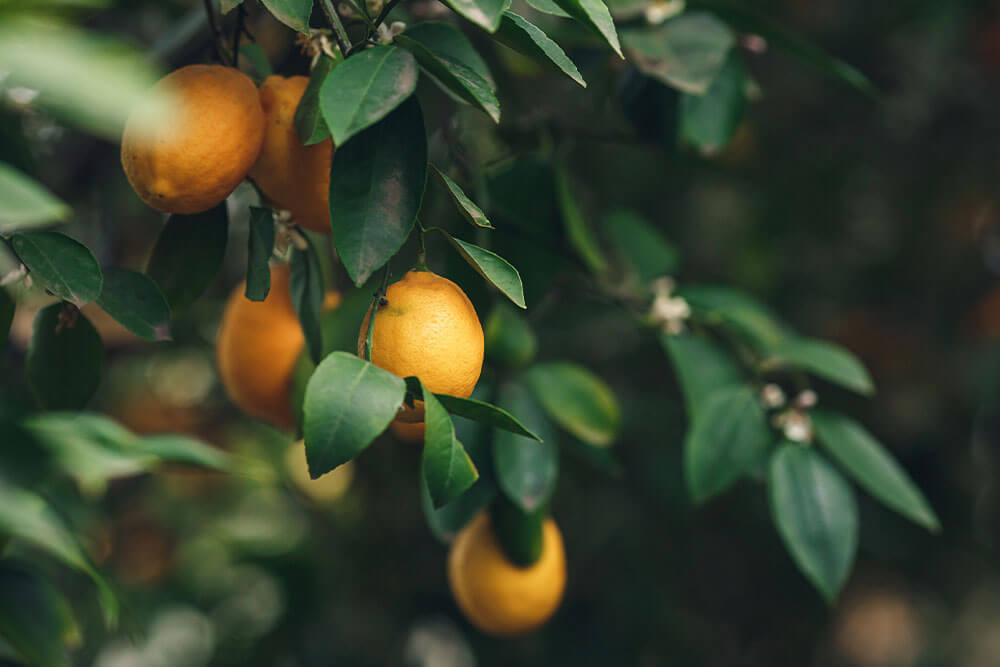
You might assume that if you only have an indoor growing space, you don’t have much of an opportunity to grow plants that produce edible fruits. After all, most orchards and vegetable plots are large and require an outdoor location. However, the Meyer lemon tree shows that you can grow and harvest healthy fruits without ever stepping outdoors. This tree is on the smaller side, produces beautiful lemon fruits, and will perform best when it gets plenty of sunlight, such as that which passes through a south-facing window.
19. Money Plant (Pilea peperomioides)
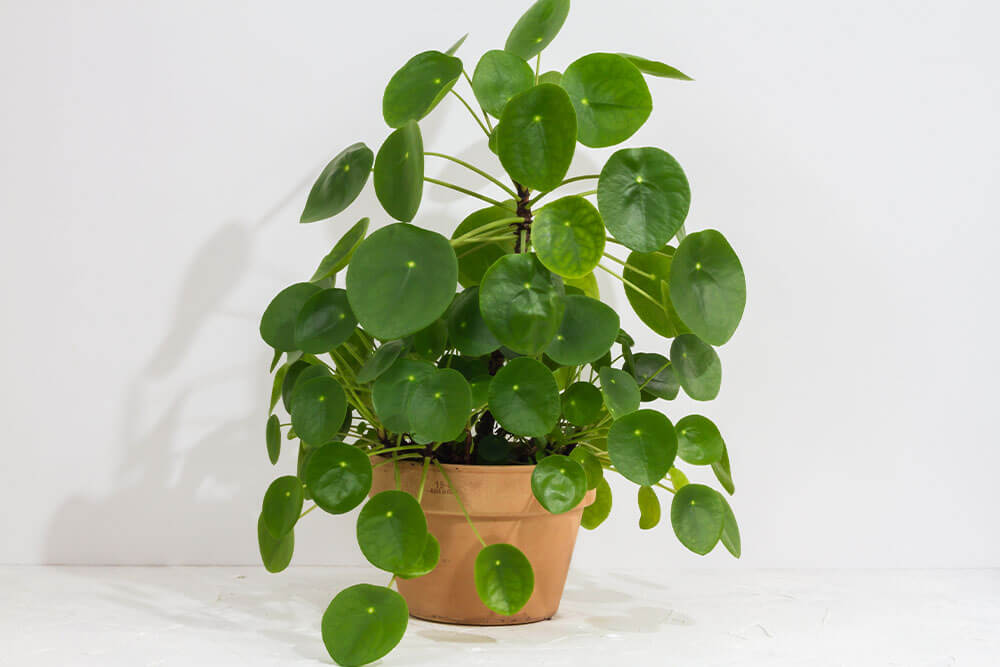
There are a few separate plant species that claim the name money plant. However, this money plant species, Pilea peperomioides, has a set of foliage that you won’t soon forget. This plant has many slender stems that emerge from the center. At the end of each of those stems, you’ll find a solitary leaf that has a nearly perfect circular shape. Amazingly, each of those circular leaves can be up to four inches long. That unique foliage is the inspiration behind the many common names that this species can go by, some of which include the UFO plant and coin plant.
20. Panda Plant (Kalanchoe tomentosa)
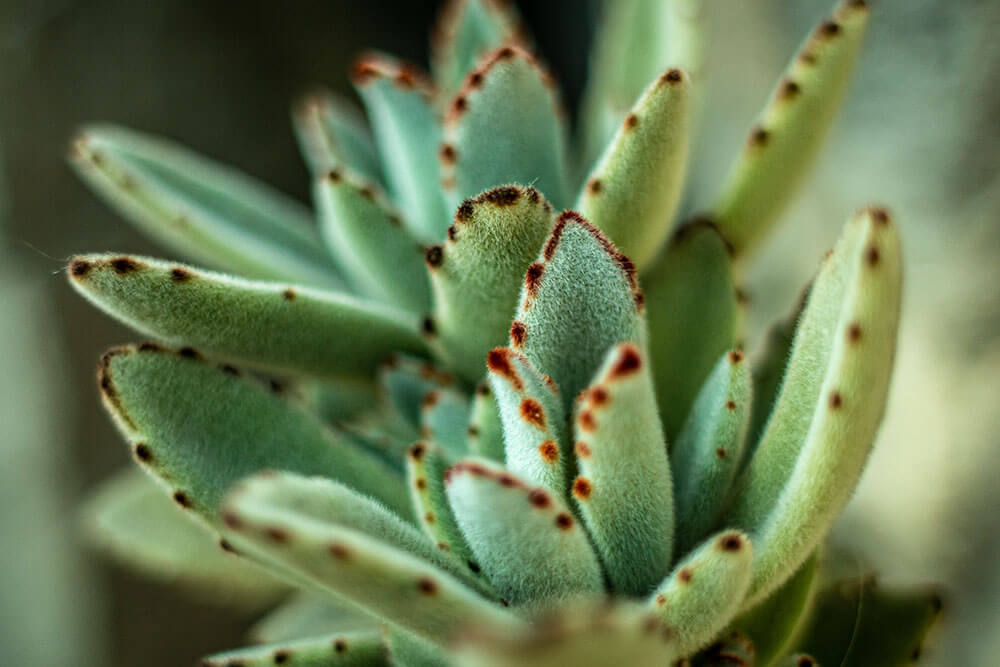
The panda plant loves sunlight, which makes it the perfect option for a south-facing window. This species is also incredibly easy to care for, as it does not require much maintenance, which is true of many other succulent varieties. Overall, the panda plant grows to be about two feet tall at most, but it will take a while for it to reach that size. No matter what stage of life the panda plant is in, it will impress you with its multi-colored foliage. Each leaf is thick and has an almost teal color covering most of it, with light brown markings dotting the top edges of each one.
21. Pencil Cactus (Euphorbia tirucalli)

The odds are that the pencil cactus has foliage that is unlike that of any other plant you have ever seen. In fact, this plant’s foliage is so bizarre that it gives the plant a wild and unkempt appearance at times. The pencil cactus develops thin shoots that follow an irregular path. Since it produces so many of these shoots at different angles, the pencil cactus creates an amazing texture while it is growing. So, if you are someone looking for a sun-loving plant that is a bit out of the ordinary, then the pencil cactus may be the perfect plant option for your home.
22. Ponytail Palm (Beaucarnea recurvata)

It is difficult to imagine a plant that has foliage that looks similar to the head of human hair. However, when you grow the ponytail palm tree, that is essentially what you will get. This plant has a single stem that is thick and light brown. At the top of that miniature trunk, you’ll see long, thin leaves that are remarkably hair-like. Also, if you want this plant to look its best, you should make sure that you give it as much sunlight as possible. A south-facing window is often the only location in a typical home that can support a ponytail palm’s growth.
23. Rosemary (Salvia rosmarinus)
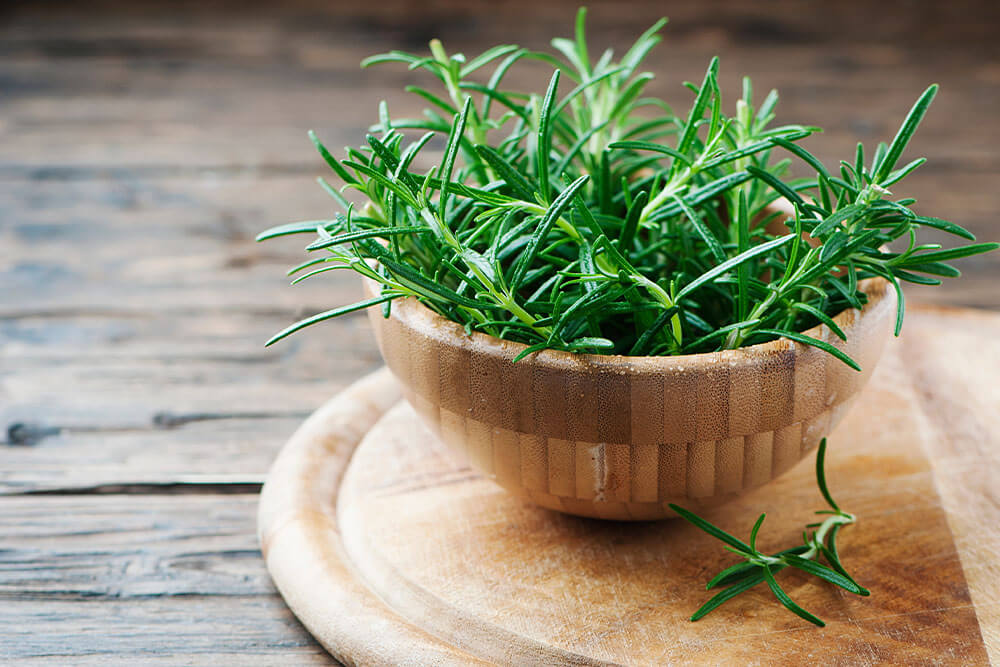
Earlier on our list, we mentioned that basil is a great herb to grow in a south-facing window. Here we have another popular herb that will thrive in the same setting. As was true of basil, rosemary plants are not only easy to grow in sunny locations. They can also be incredibly useful for adding flavor to your favorite dishes. On top of that, a mature rosemary plant will impart a lovely fragrance to your indoor living spaces. Beyond its culinary uses and incredible scent, rosemary plants can also provide visual interest in the form of small lavender flowers.
24. Snake Plant (Dracaena trifasciata)
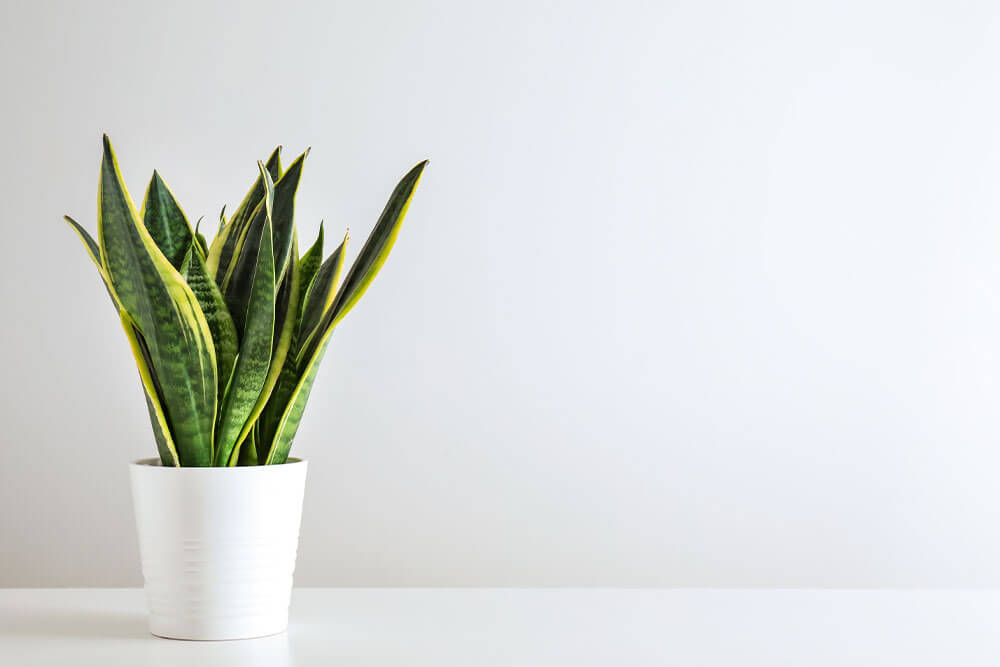
As was true of some other plants on this list of sun-loving south-facing window plants, the snake plant is also a species that will do well in low-light settings. However, as was true of those other adaptable plants, snake plants are also able to grow in just about any degree of sun exposure, which means that they can handle direct sunlight too. Overall, snake plants are very easy to care for, and they have astoundingly beautiful foliage as well that is long and often has multiple shades of green and yellow that appear in vertical stripes along each leaf.
25. Spider Plant (Chlorophytum comosum)
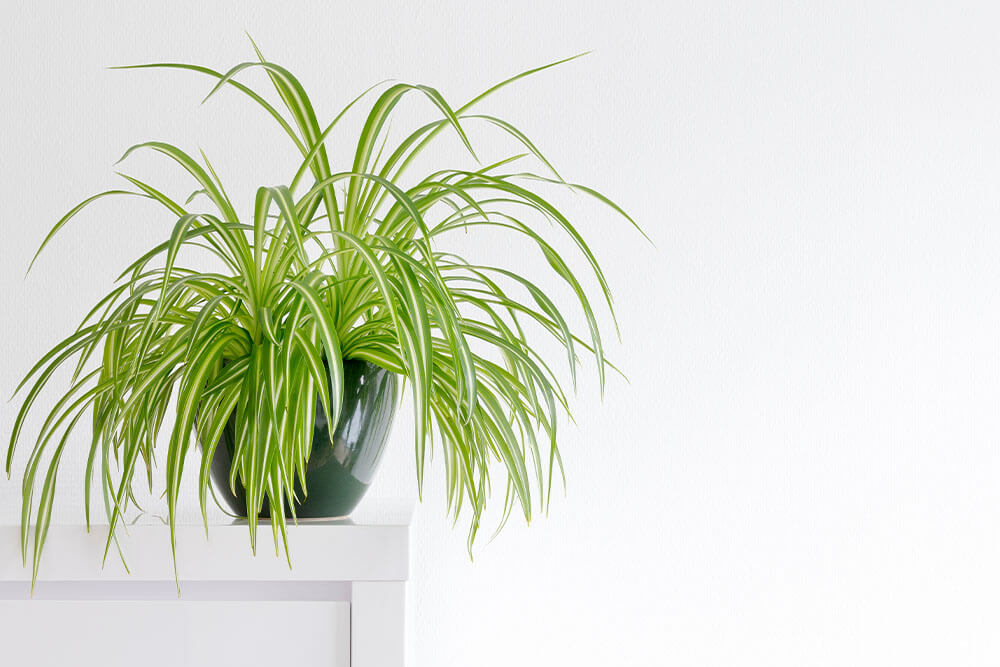
Spider plants get their ornamental value from their growth habit and the color of their leaves. In the former case, this plant forms clusters of foliage that have an arching habit that allows this plant to spill over the side of whatever container it lives in. That same dangling growth habit is what makes the spider plant ideal for hanging baskets. When it comes to foliage color, the spider plant continues to add appeal due to the fact that each leaf has a creamy white center that fades gradually to dark green on the edges of each leaf.
26. String of Hearts (Ceropegia woodii)
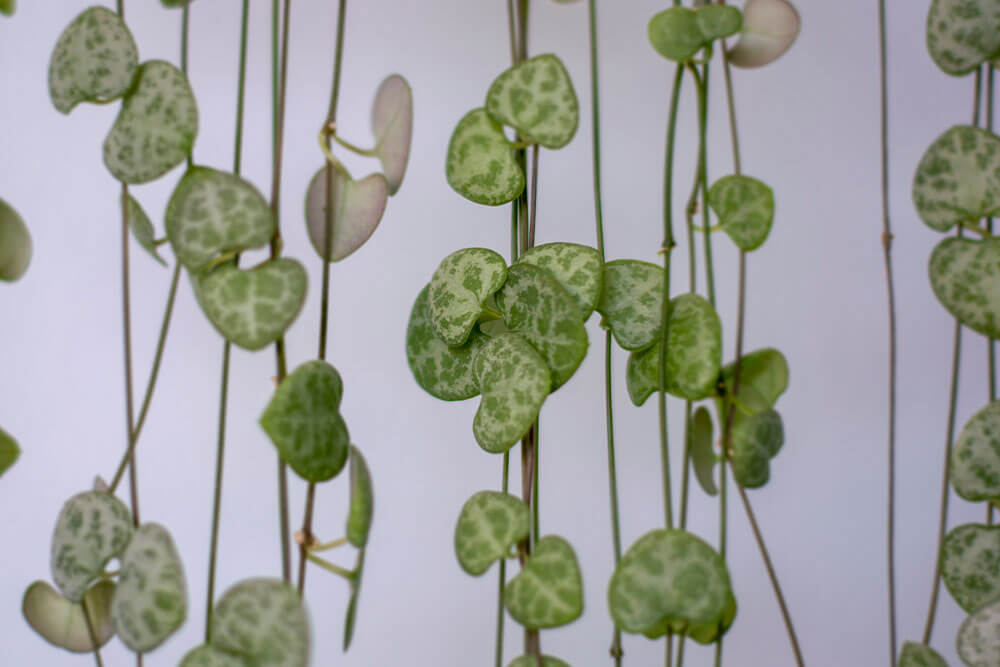
As is the case for a few other plants on this list, the string of hearts plant is ideal for hanging baskets. When mature, this plant will have long hanging stems that are several feet long. Along each of those stems, you’ll find small leaves, each of which has a distinct heart shape. Along with that interesting shape, the leaves of a string of hearts plant also have interesting colors. The most fascinating versions of this plant have leaves that are both green and pink at the same time.
27. String of Pearls (Curio rowleyanus)
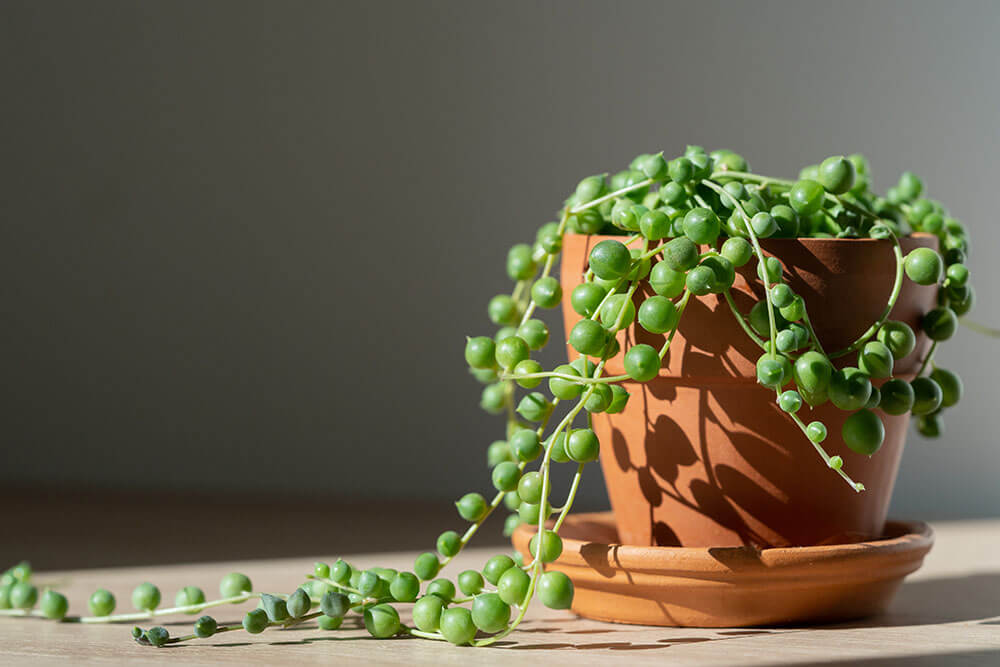
The string of pearls plant is another species for south-facing windows that have a growth habit that is unlike that of most other plants. As the name suggests, a string of pearls plant will consist of stems that are both thin and flexible and leaves that are round and relatively thick. Based on that growth habit, it is no surprise to learn that this plant is perfect for hanging baskets, as the stems will start to hang over the edge of the container when they get long enough. For the best results, give this plant enough water to keep the soil consistently moist and about six to eight hours of sunlight per day.
28. Ti Plant (Cordyline fruticosa)
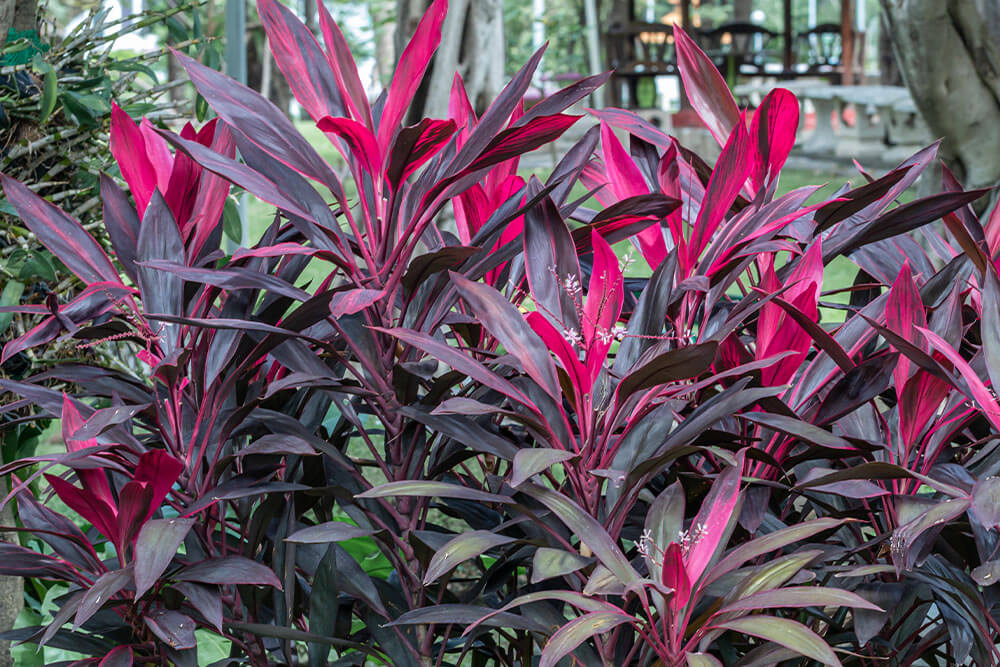
If you are tired of growing plants that have green foliage that is difficult to distinguish from other plants, then it is time for you to choose a plant species that has a uniquely vibrant foliage hue. The Ti plant is one of the best options for anyone in that situation. This plant is common in Hawaii and grows as a broad-leaved evergreen. Each of those evergreen leaves has shades of dark purple and light purple that appear in large but irregular patches and give the Ti plant a vibrance that few other south-facing window species can match.
29. ZZ Plant (Zamioculcas zamiifolia)
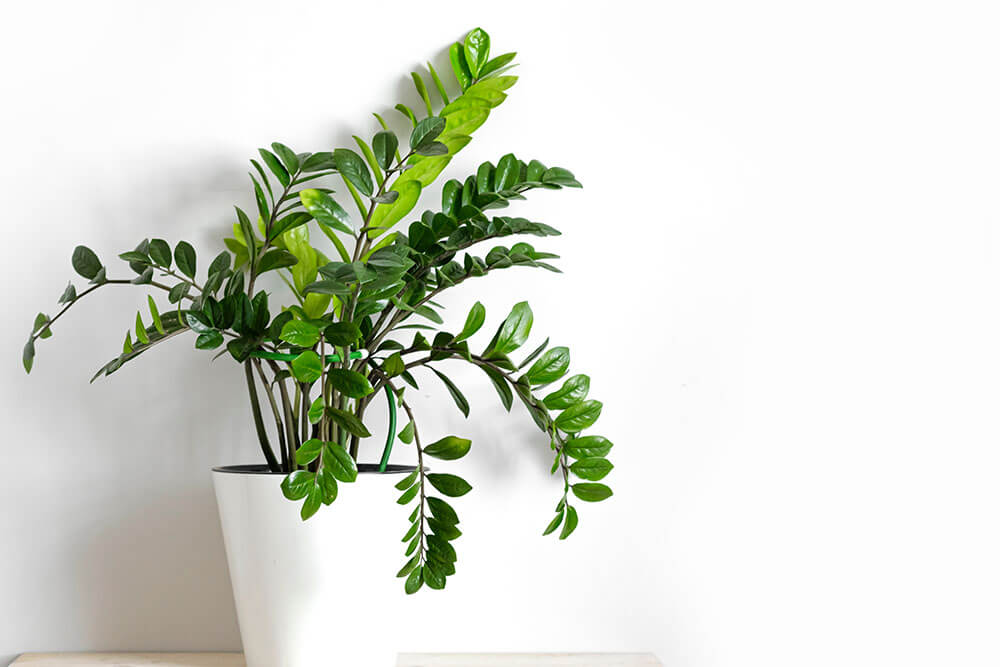
For the final entry on our list of the best plants for south-facing windows, we’ll venture to the very end of the alphabet. The ZZ plant gets its name from the first two letters of its botanical name, Zamioculcas zamiifolia. This plant may not be the most colorful option on our list, but it has a lovely set of leaves that give it plenty of ornamental value. Each leaf is dark green and has a waxy surface that causes it to shine. Although the ZZ plant comes from regions of eastern Africa, it has since become common as an indoor plant throughout the world, partially due to its ability to grow well in the sunlight that pours through a south-facing window.
As is true of any plant group, the collection of plants for south-facing windows that we have just shared is often the topic of many questions. These questions come in many forms, but some are more common than others. To help round out your knowledge of the best south-facing window houseplants, we have answered a few of the most common questions below.
Frequently Asked Questions About Plants for South-Facing Windows
Can I Put Plants in a South-Facing Window?
You can certainly place plants in a south-facing window. However, before you do, you should check the growing requirements of the plants you have. You should only grow plants in south-facing windows if they are well-suited for that setting. Generally, plants that prefer full, direct sun exposure every day are best for south-facing windows. Alternatively, there are plenty of popular indoor plants that prefer partial shade, or lower light settings, which you should not plant in a south-facing window. If you plant a species that does not tolerate strong sunlight in a south-facing window, it will likely develop leaf scorch and die relatively quickly.
Do Succulents Do Well in South-Facing Windows?
There are many different types of succulents, and each one will come with a specific set of growing requirements, which include sunlight needs. With that said, most succulent species will do well in south-facing windows because they are well-suited to areas that receive full sunlight. As such, if you are searching for plants to grow in your sun-filled window, perusing the collection of common succulent plants is a great way to start. In fact, many of these plants will suffer if they do not receive sunlight from a south-facing window.
Can Aloe Be in a South-Facing Window?
Since aloe is a succulent plant, and most succulent plants love to live in areas that receive full sunlight, aloe is a viable planting option for south-facing windows. It is certainly possible to grow an aloe plant in a location other than a south-facing window, but doing so does not guarantee the best results. When an aloe plant does not get enough sunlight, it will likely produce weak growth and may develop other issues as well. By contrast, aloe plants that grow in south-facing windows tend to thrive and put forth vigorous growth.
Which Direction Is Not Good for Plants?
The best direction relative to the sun at which you place your plants depends entirely on the type of plant that you own. For instance, an indoor plant that loves full sunlight will perform best in a south-facing window or any other window that receives a lot of light. Alternatively, there are plenty of other plants that prefer indirect light, meaning that they should be near a window but not directly in it. Additionally, there are plants that prefer low-light settings, which means that you should place them away from any sunlight whenever possible.
What Windows Are Best for Houseplants?
Again, the best type of window for your houseplants depends on the type of plant you have and their sunlight preferences. For plants that love sunlight and need plenty of it to survive, a south-facing window is best. However, there are plenty of plants that do not need that much light and will do much better when they grow in either an east-facing window or a west-facing window. In either of those cases, the window will provide enough light without it being too much, which can cause leaf scorch and other complications in many plants.
29 Incredible Types of Plants for South-Facing Windows that Love the Light
You now know that finding plants for south-facing windows is not all that hard to do. In fact, there are many plants that thrive in south-facing windows, which means that you have plenty of aesthetic options to choose from. Above all, it is most important to review the growing requirements of the plants you own before you start growing them in any window. If your plant’s growing needs include full sunlight every day, then you can rest assured that they will be a great candidate for your south-facing window. But if you don’t want to do too much research, selecting a species from our list of the best plants for south-facing windows will serve you well, too.


